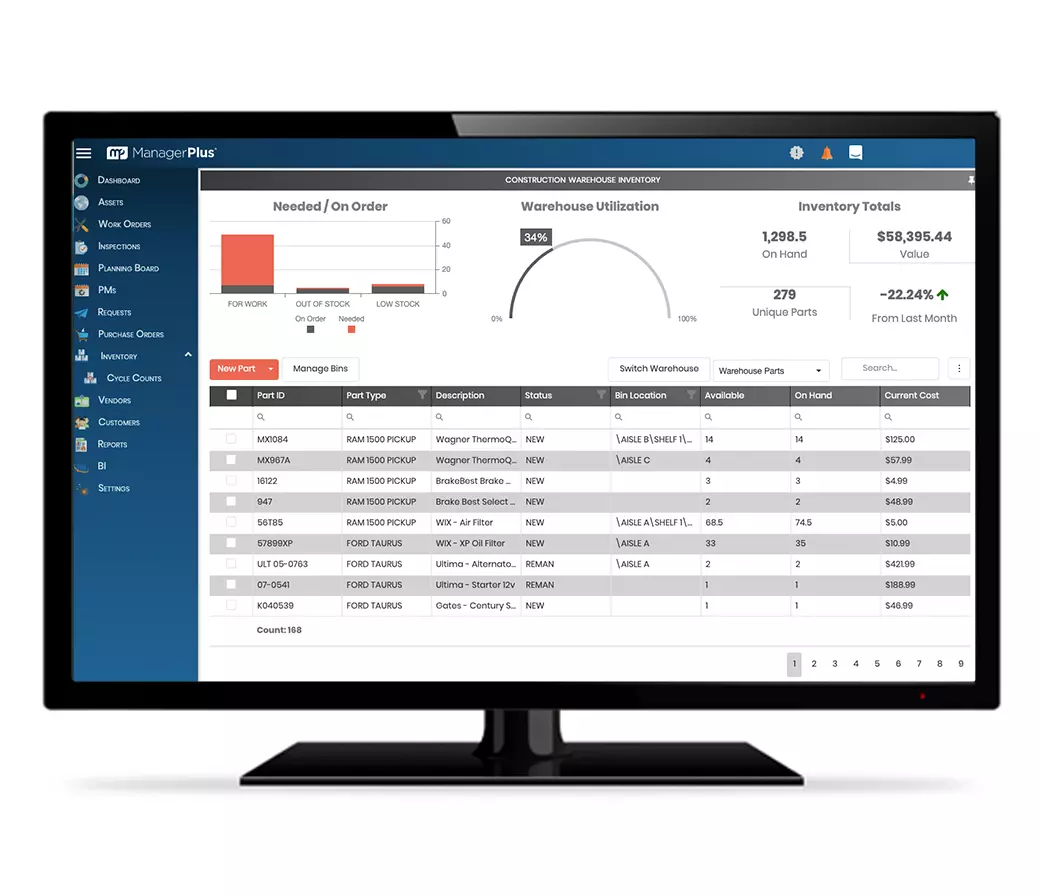The last thing you need in your business is another acronym, but ‘ERP’ is a solution that’s worth knowing about. ERP can play a transformative role in your business, helping you to collect and organize key information so you can run a leaner and more efficient operation.
So what is ERP, how does it work, and what can it do for your business? Stick with us for the next few minutes to find out.
What is enterprise resource planning?
ERP, short for enterprise resource planning, is software that’s used by businesses of all sizes and in every industry to manage their day-to-day activities. That includes accounting, project management, human resources, procurement, supply chain operations, and risk management and compliance.
Rather than treating all of these business activities as standalone functions, ERP software enables a seamless flow of data between them. By collecting and centralizing the information in a central database, ERP systems can help you eliminate data duplication, increase data integrity, and create a single source of truth for your business.
What does ERP software do?
ERP software helps to unify people, processes, technology, and data across an organization. The main purpose of an ERP system is to increase the efficiency of an organization by improving how it uses its resources. Having an integrated system with a common database and real-time operation gives businesses better visibility of their resources. That helps you to use the resources you have more efficiently and reduce your resources without sacrificing quality or performance.
ERP software makes it easier for businesses to:
- Collect and compare metrics across departments
- Create reports based on specific roles or user preferences
- Collate and report data more quickly
- Generate insights on how resources are being utilized across the company
- Synchronize reporting and reduce the need to maintain separate databases and spreadsheets
- Access the latest data from anywhere
- Make real-time business decisions about where to cut costs and streamline processes based on accurate and timely data
What is an example of ERP in practice?
How ERP software is used in practice differs depending on the industry your business operates in and its activities. As an example, manufacturing organizations rely on ERP tools to handle stock management, quality control. and scheduling. Construction companies, on the other hand, will be more focused on staying in control of their materials, labor, equipment, task management, and the subcontractors they’ve hired.
Let’s look at the example of a manufacturing company. It has to handle several different business processes to be able to deliver its products on time. That includes everything from purchasing the raw materials to tracking the time of workers, controlling inventory, and managing its finances. Every aspect of a manufacturing business is interconnected, which is why ERP software can be an all-in-one solution.
ERP software can track the working hours of employees so manufacturers can measure their productivity, optimize the ordering and management of raw materials, and automate processes such as invoicing and payment requests. That saves them time that can be better spent growing their businesses.

What businesses use ERP?
Any business, large or small, that has complex functions and relies on accurate and timely data, can benefit from implementing an ERP system. Currently, manufacturers are the leading users of ERP software, but it is also common in the following industries:
- Healthcare
ERP systems can be used by healthcare providers to better manage complex patient data such as medical history and treatment schedules. That information can then be integrated with processes such as billing, etc. ERP software also helps to streamline the flow of data between processes to increase the efficiency of staff and improve the treatment of patients.
- Construction
Being a project manager or contractor in the construction industry is no easy task. Many tasks and processes must be completed simultaneously if projects are to be finished on time and within budget. ERP can help to align those processes, prevent discrepancies in the data, keep track of inventory, and ensure all of the relevant documentation is available in one place.
- Retail
Retail is another sector where multiple functions like inventory management, sales reporting, invoice creation, and customer information all run concurrently. ERP software allows data to flow seamlessly between these functions to automate processes and provide valuable insights in real-time.
- Wholesale
Wholesalers can use ERP solutions to manage their supply chain, keep track of inventory from multiple warehouses, and ensure that there aren’t any bottlenecks in the distribution of their products. All of the product details can be kept in a central location, sales and purchase orders can be tracked, and invoice requests and bill payments can be automated.
This is a small sample of the types of businesses that use ERP software. Others include organizations in education, energy, financial services, media and publishing, professional services, and transportation and logistics. These days, any organization that wants to improve its workflow, build a knowledge base, or grow its business can use ERP software.
What are the different types of ERP software?
ERP solutions can be implemented in three different ways:
- On-premises – This type of ERP solution is deployed directly on your devices and hosted on your servers for full control, support, and ownership of the system.
- Cloud-based – Known as Software as a Service (SaaS), this is a web-based ERP solution. You can access and store data on any device with an internet connection. You’ll pay a monthly or annual subscription, which includes regular updates, support, training, and flexible customizations from the software provider.
- Hybrid – This combines cloud-based and on-premises ERP implementation to give you the flexibility to migrate between delivery models.
Different ERP vendors provide different implementation options, so it’s important to consider the best deployment model for your organization when choosing your provider.

What are the benefits of ERP solutions?
Modern ERP solutions have comprehensive feature sets that bring a range of benefits for organizations. Where businesses see the most value differs depending on the challenges they face. However, with ERP implementation leading to process improvements for 95% of businesses, there are some universal advantages you can expect:
- Cost savings – Automating simple and repetitive tasks, minimizing errors, and identifying cross-company efficiencies can save you money.
- Workflow visibility – Having all workflows and information in one place makes tasks faster and easier for managers and leaders.
- Reporting – Powerful reporting and analytics tools allow users to track KPIs and display all kinds of metrics that can help to improve business performance.
- Business insights – With access to data from across the company, ERP solutions can uncover unexpected trends and generate insights that improve decision-making.
- Collaboration – ERP solutions make it easier to share information. That helps to break down walls between departments and gives everyone access to the relevant data.
Next steps
ERP and EAM (Enterprise Asset Management) solutions can work together to improve your company’s efficiency. ERP focuses on all activities and operations of your organization, while EAM can improve the management of your assets and facilities.
However, EAM software can also be an alternative to an ERP solution. It is less complex, easier to implement, and less expensive. For organizations that are highly dependent on assets such as machines, components, and equipment, an EAM solution such as ManagerPlus® is often a more cost-effective option.
Start with a live, personalized demo with one of our experts to see how ManagerPlus EAM software can improve the efficiency of your business.
Executive summary
An ERP solution is a critical piece of software that collects information from various departments in a central database to provide a single source of truth for your business. ERP can create major time and cost savings by providing organization-wide visibility that highlights inefficiencies and areas for improvement. There are several deployment models to suit different business types and this is an important consideration when choosing the right ERP solution for you.


